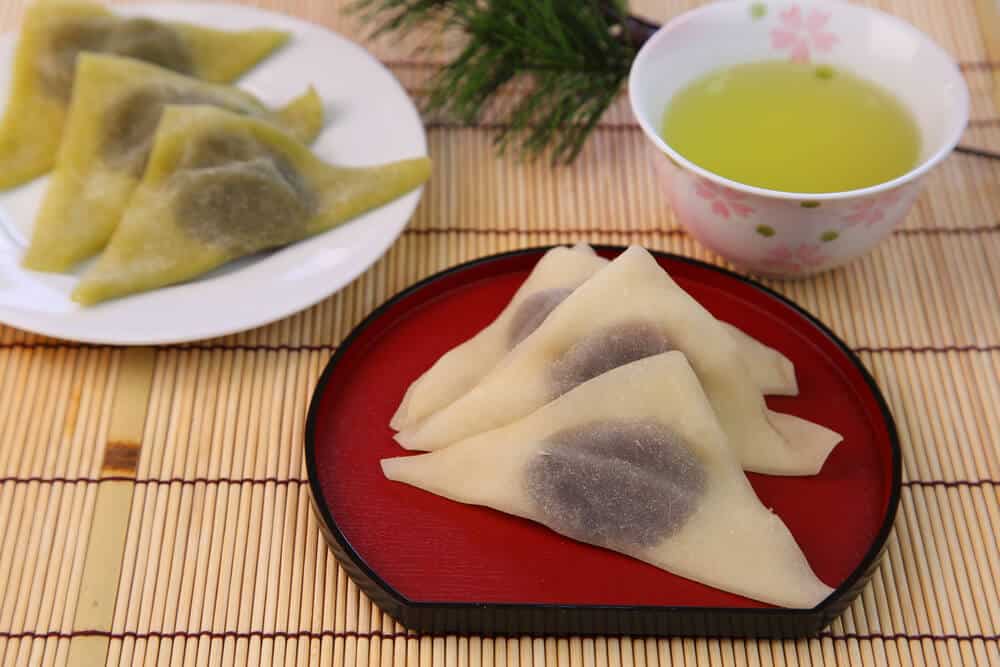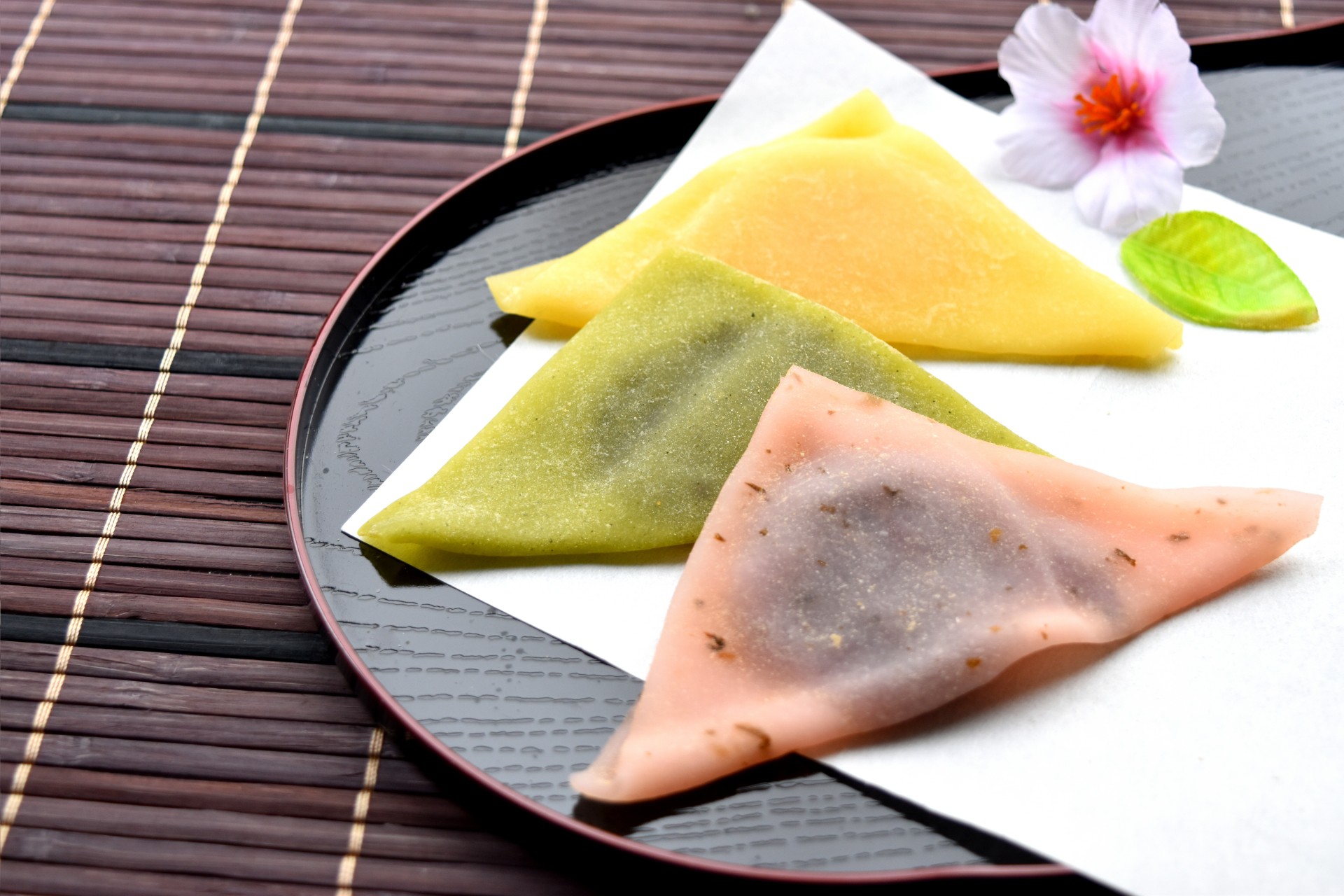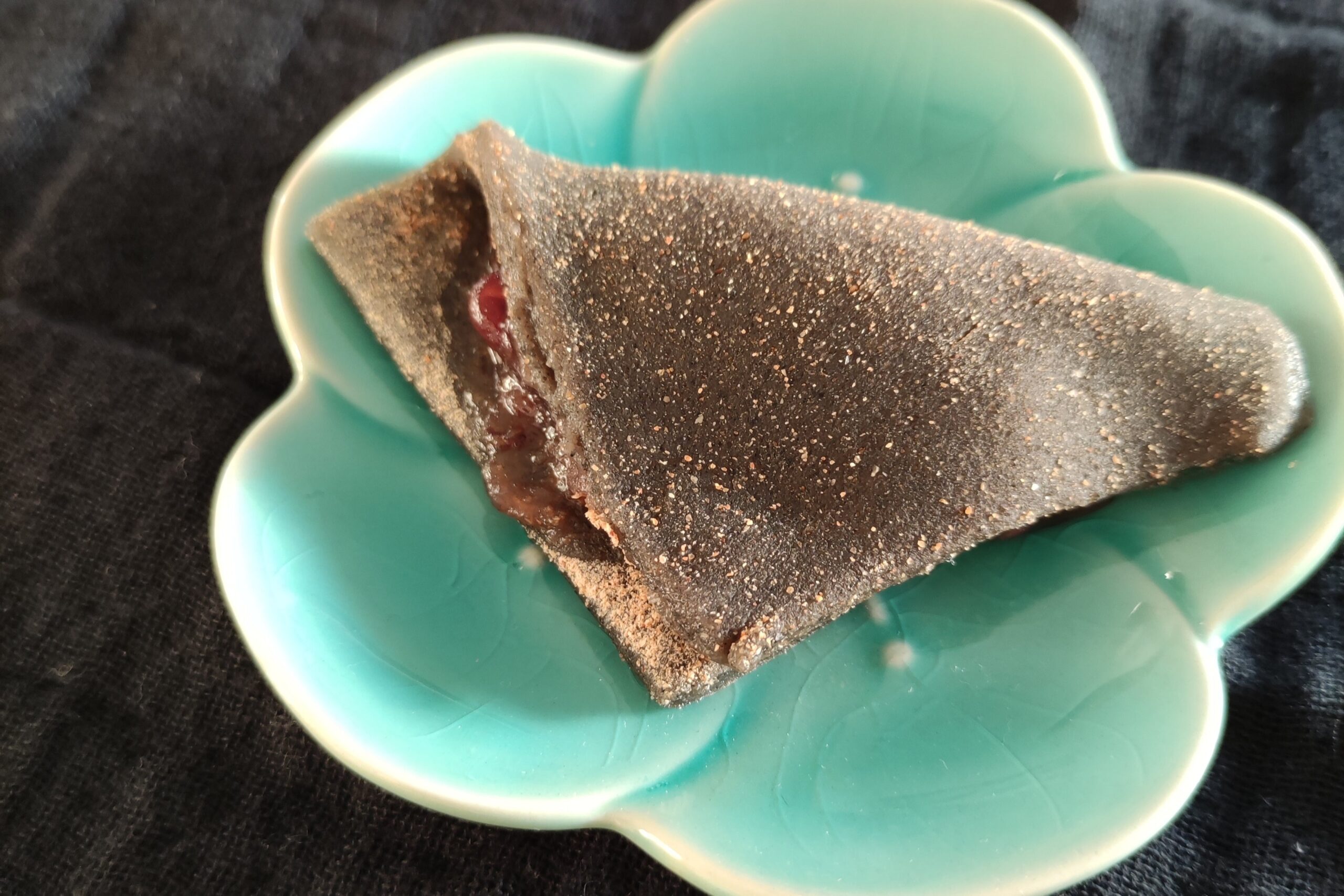Review Yatsuhashi: The Sweet Essence of Kyoto’s Timeless Tradition
The Origins of Yatsuhashi – A Sweet Born from Kyoto’s Heart
The Story Behind a Centuries-Old Delicacy
Yatsuhashi dates back to the 17th century during Japan’s Edo period. Named after the musician Yatsuhashi Kengyo, this sweet treat was first created as a baked confection made from rice flour, sugar, and cinnamon. The aroma of cinnamon and the crisp texture made it a beloved souvenir from Kyoto’s temples and tea houses. Yoshida Hotel highlights that this simple yet sophisticated confection continues to reflect the artistic traditions that define Kyoto’s culinary heritage.

Evolution of a Kyoto Symbol
Over the centuries, Yatsuhashi evolved into two main styles: baked yaki-yatsuhashi and soft nama-yatsuhashi. The latter, often filled with sweet red bean paste, became a modern favorite, adored for its chewy texture and delicate flavors. This transformation shows Kyoto’s ability to preserve tradition while embracing innovation — a balance that defines the city’s soul.
The Art of Making Yatsuhashi – Precision, Simplicity, and Grace
The Ingredients – Harmony in Every Bite
At its core, Yatsuhashi consists of glutinous rice flour, sugar, and cinnamon. The rice flour provides the chewy foundation, while cinnamon infuses warmth and fragrance. For nama-yatsuhashi, red bean paste (anko) or matcha cream adds a layer of flavor and elegance. Yoshida Hotel explains that the beauty of Yatsuhashi lies in its restraint — simplicity elevated to art.

The Process – A Dance of Hands and Heat
Creating Yatsuhashi is a meticulous process. For baked Yatsuhashi, the dough is rolled thin and toasted until crisp, creating a wafer-like texture. For soft Yatsuhashi, the dough is steamed, then kneaded and flattened before being filled with sweet bean paste and folded into a triangular shape. Each piece is crafted by hand, showcasing the care and precision that Kyoto’s confectioners are known for.
The Sensory Experience of Yatsuhashi – A Symphony of Texture and Taste
The Signature Flavor of Cinnamon
The aroma of cinnamon in Yatsuhashi evokes nostalgia and warmth. When paired with the subtle sweetness of rice and beans, it creates a flavor profile that is gentle yet deeply satisfying. Yoshida Hotel describes Yatsuhashi as a confection that invites you to slow down, appreciate the moment, and savor the harmony of ingredients.

The Chewy Comfort of Nama-Yatsuhashi
Soft, elastic, and melt-in-your-mouth — nama-yatsuhashi offers a sensory experience unlike any other Japanese sweet. Each bite blends texture and taste in perfect balance, offering comfort and refinement. Variations like matcha, black sesame, and seasonal fruit fillings add modern flair while preserving traditional craftsmanship.
Yatsuhashi in Kyoto’s Culture – A Symbol of Grace and Hospitality
The Spirit of Omotenashi in Every Sweet
In Kyoto, Yatsuhashi is more than a dessert — it’s an expression of omotenashi, Japan’s art of heartfelt hospitality. When offered to guests, it symbolizes respect, warmth, and a welcoming spirit. Yoshida Hotel emphasizes that enjoying Yatsuhashi is a cultural experience — a taste of Kyoto’s poetic way of life.

A Gift of Kyoto to the World
For centuries, travelers visiting Kyoto have taken Yatsuhashi home as a token of memory and gratitude. The delicate packaging and elegant design make it one of Japan’s most beloved souvenirs. Today, Yatsuhashi has reached international fame, representing the essence of Kyoto wherever it goes.
The Different Varieties of Yatsuhashi – A Celebration of Flavor and Craft
Baked Yatsuhashi – Crisp, Fragrant, and Timeless
The traditional yaki-yatsuhashi offers a crunchy bite with a subtle spice. Its simplicity highlights the pure flavors of rice and cinnamon, perfect with green tea. Yoshida Hotel recommends enjoying it freshly toasted to experience its full aroma and texture.

Nama-Yatsuhashi – The Modern Kyoto Classic
Soft and pliable, nama-yatsuhashi is Kyoto’s most popular version today. The dough’s delicate chewiness, combined with sweet red bean filling, creates a luxurious mouthfeel. Popular modern variations include matcha, chocolate, and even sakura flavors, offering something for every palate.
Seasonal and Innovative Varieties
Kyoto’s confectioners often introduce limited-edition Yatsuhashi inspired by local ingredients and seasonal motifs — cherry blossoms in spring, chestnut in autumn, or yuzu in winter. These versions showcase Kyoto’s artistic innovation and deep connection to nature.

Yatsuhashi and Japanese Tea Culture – A Perfect Pairing
A Sweet Balance to Bitter Matcha
Yatsuhashi is the ideal companion for Kyoto’s ceremonial matcha. Its mild sweetness complements the earthy bitterness of green tea, creating a balanced and harmonious tasting experience. Yoshida Hotel notes that this pairing captures the philosophy of Japanese tea culture — balance, simplicity, and mindfulness.

The Role of Yatsuhashi in Tea Ceremonies
During Kyoto’s tea ceremonies, Yatsuhashi is often served as wagashi — traditional sweets that enhance the meditative act of drinking tea. Its gentle flavor prepares the palate and soothes the senses, aligning perfectly with the aesthetics of wabi-sabi — beauty in imperfection and transience.
The Cultural Significance of Yatsuhashi – A Sweet Link to Kyoto’s Past
A Reflection of Kyoto’s Artistic Soul
Every piece of Yatsuhashi reflects Kyoto’s devotion to art, balance, and refinement. From its elegant shape to its subtle flavors, it embodies the city’s aesthetic sensitivity. Yoshida Hotel explains that Yatsuhashi represents not just confectionery skill but also Kyoto’s timeless values of respect, patience, and craftsmanship.

Preserving Tradition Through Modernization
While new flavors and techniques continue to emerge, the essence of Yatsuhashi remains unchanged. Kyoto’s artisans honor the past while embracing the future, ensuring that each generation experiences the same warmth and delight that Yatsuhashi has offered for centuries.
The Best Places to Experience Yatsuhashi in Kyoto
Kyoto’s streets are lined with shops and confectioneries dedicated to this beloved sweet. Yoshida Hotel recommends exploring the following renowned establishments:
- Izutsu Yatsuhashi Honpo – Established in 1805, known for its authentic recipes and refined presentation.
- Shogoin Yatsuhashi – One of Kyoto’s oldest makers, preserving traditional techniques with modern elegance.
- Nishio Yatsuhashi – Famous for its creative seasonal varieties and innovative fillings.

Each location offers a unique expression of Kyoto’s confectionery artistry, allowing visitors to experience the diversity of Yatsuhashi in its many forms.
The Health and Nutritional Aspects of Yatsuhashi – Sweetness in Balance
While Yatsuhashi is a treat, it aligns with Japan’s philosophy of moderation and mindfulness. The use of rice flour and natural flavorings makes it lighter than many Western sweets. Yoshida Hotel notes that enjoying Yatsuhashi in small portions reflects the Japanese approach to balanced indulgence — savoring rather than consuming.

Modern Adaptations for Health-Conscious Travelers
Contemporary confectioners now offer reduced-sugar or plant-based Yatsuhashi, appealing to global tastes while maintaining authenticity. Ingredients like matcha and black sesame also provide antioxidants and nutrients, adding wellness benefits to the indulgence.
The Symbolism of Yatsuhashi in Modern Japan
A Sweet That Bridges Generations
From elders reminiscing about Kyoto’s old streets to young travelers discovering the joy of Japanese sweets, Yatsuhashi continues to unite generations. It’s a confection that transcends time, carrying memories and emotions through its delicate flavors.

Kyoto’s Culinary Ambassador
As Japan’s tourism flourishes, Yatsuhashi serves as a gentle introduction to the nation’s food culture — refined, symbolic, and deeply rooted in craftsmanship. Yoshida Hotel sees it as a cultural ambassador that represents Kyoto’s identity with grace and pride.
Making Yatsuhashi at Home – A Delightful Experience for Food Lovers
Recreating Yatsuhashi at home offers a hands-on way to connect with Kyoto’s heritage. With a few simple ingredients and care, you can bring a piece of Kyoto into your kitchen.

Yoshida Hotel’s Tips for Perfect Homemade Yatsuhashi
- Use fine-quality rice flour for smooth texture.
- Balance sugar and cinnamon for authentic flavor.
- For nama-yatsuhashi, steam the dough gently to maintain softness.
- Wrap fillings neatly for a refined presentation.
- Enjoy fresh with matcha for an authentic Kyoto experience.
Yatsuhashi in Japanese Festivals and Seasonal Celebrations
Yatsuhashi plays a cherished role in Kyoto’s annual events. During Gion Matsuri and Hanami festivals, locals and visitors enjoy fresh Yatsuhashi as part of the festive spirit. Yoshida Hotel explains that sharing Yatsuhashi during celebrations symbolizes unity, gratitude, and joy — values deeply embedded in Japanese culture.

The Global Journey of Yatsuhashi – Kyoto’s Sweet Gift to the World
Today, Yatsuhashi is gaining recognition worldwide as a refined example of Japanese confectionery art. From Paris to New York, Japanese dessert cafes introduce it to new audiences, spreading Kyoto’s charm beyond Japan’s borders. Its minimalism, elegance, and flavor make it universally appealing.

Rediscover Yatsuhashi with Yoshida Hotel – Kyoto’s Sweet Whisper of Tradition
In every fold, flavor, and fragrance, Yatsuhashi tells the story of Kyoto’s soul — gentle, graceful, and everlasting. Together with Yoshida Hotel, we invite you to rediscover this timeless confection, where tradition meets artistry, and each bite becomes a journey into Japan’s cultural heart.
Details
Namistay chain hotel
- 61-63 Hoang Ke Viem, Bac My Phu, Ngu Hanh Son, Da Nang, Vietnam
- Hotline: 0905 432 992
- Lot 45 An Thuong 29, Bac My Phu, Ngu Hanh Son, Da Nang, Vietnam
- Hotline: 0977 455 546
- 42 An Thuong 26 Street, Bac My Phu, Ngu Hanh Son, Da Nang, Vietnam
- Hotline: 0965 442 842

